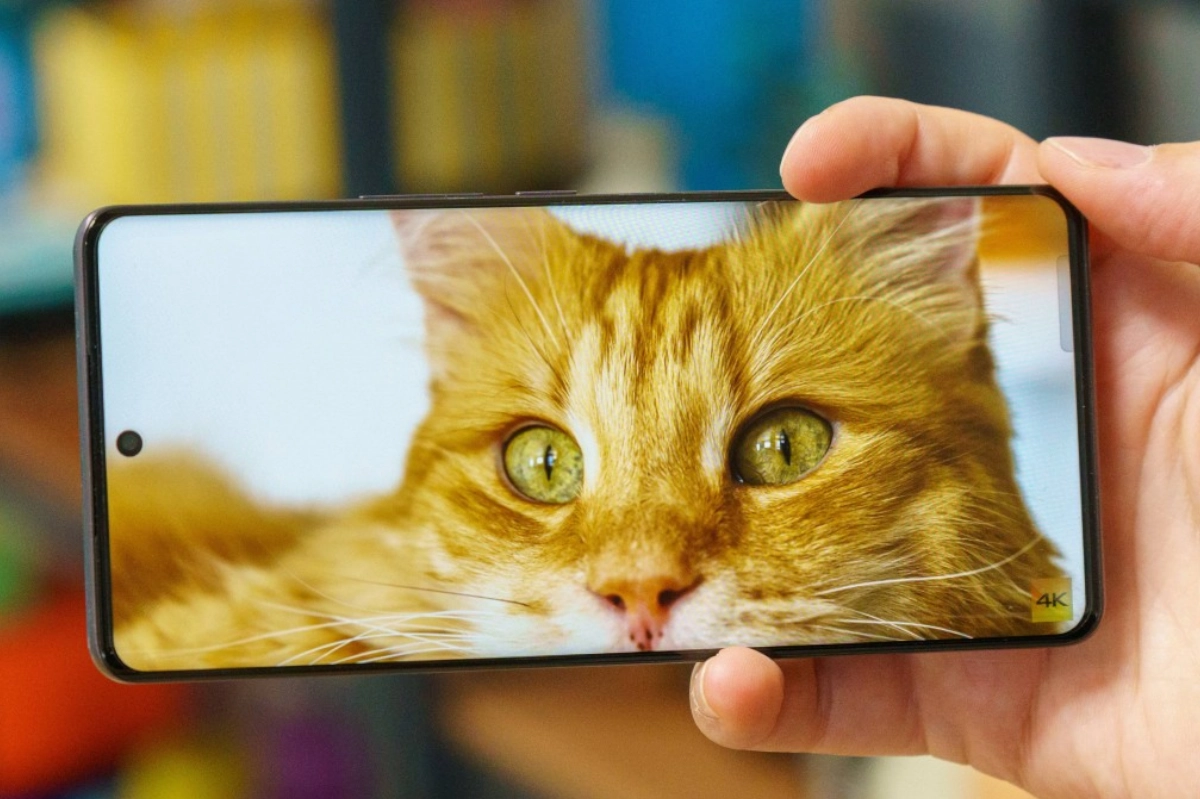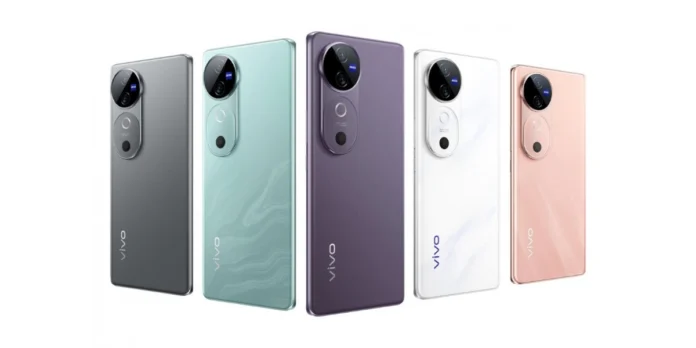Overview:
Vivo has a rather excellent formula for their V-series of smartphones already. These phones have a strong emphasis on photography, especially the selfie camera, all housed in an upscale, well-built package that occasionally falls short of flagship features and is finished off with a striking design.
This also applies to the Vivo V40. While sharing many features with its predecessor, the V30, it also makes incremental improvements in the majority of important areas. With a newly designed 50MP primary camera that incorporates Zeiss optics, the camera remains the focal point of the experience. It comes with a third autofocusing 50MP selfie camera and the well-known autofocusing 50MP ultrawide camera.
Brief specs of the Vivo V40:
- Body: 164.2×75.0x7.6mm, 190g; Glass front, plastic frame, glass back; IP68/IP69 dust/water resistant (up to 1.5m for 30 min).
- Display: 6.78″ AMOLED, HDR10+, 120Hz, 4500 nits (peak), 1260x2800px resolution, 20:9 aspect ratio, 453ppi.
- Chipset: Qualcomm SM7550-AB Snapdragon 7 Gen 3 (4 nm): Octa-core (1×2.63 GHz Cortex-A715 & 3×2.4 GHz Cortex-A715 & 4×1.8 GHz Cortex-A510); Adreno 720.
- Memory: 128GB 8GB RAM, 256GB 8GB RAM, 256GB 12GB RAM, 512GB 12GB RAM; UFS 2.2.
- OS/Software: Android 14, Funtouch 14.
- Rear camera: Wide (main): 50 MP, f/1.9, 24mm, 1/1.56″, 1.0µm, PDAF, OIS; Ultra wide angle: 50 MP, f/2.0, 15mm, 119-degree, 1/2.76″, 0.64µm, AF.
- Front camera: 50 MP, f/2.0, 21mm (wide), 1/2.76″, 0.64µm, AF.
- Video capture: Rear camera: 4K@30fps, 1080p@30fps, gyro-EIS, OIS; Front camera: 4K@30fps, 1080p@30fps.
- Battery: 5500mAh; 80W wired, PD, Reverse wired.
- Connectivity: 5G; eSIM; Dual SIM; Wi-Fi 5; BT 5.4; NFC.
- Misc: Fingerprint reader (under display, optical); stereo speakers.
Read more: Review of the Xiaomi 14T Pro
The Vivo V40 is very attractive. With its revolutionary camera island design and velvety sandpaper-like surface, its back is sure to divide opinions. Even with the current trend toward flatter designs, the 6.78-inch, 120Hz AMOLED display up front is nonetheless stunning and aggressively curved.

We also notice that the V40 has a larger 5,500 mAh battery, better IP68/69 ingress protection, and a newly added dual speaker arrangement when comparing it to its predecessor. Each of them is a highly helpful addition on its own.
Aside from that, the V40 continues to be built around the well-known Qualcomm Snapdragon 7 Gen 3 CPU, which comes with 128GB, 256GB, or 512GB of UFS 2.2 storage and 8GB or 12GB of RAM. We will continue to assess its functionality. Let’s conduct a brief unboxing before getting into any device details.
Opening the package:
The cardboard packaging for the Vivo V40 is a straightforward two-piece design. It has a striking rainbow ring on top of a black background. The box is fairly strong in its own right. The phone itself is housed in an inside plastic cradle that, while not particularly environmentally friendly, should help keep it secure while in transit.

A lovely, thick, soft plastic case that matches the color of the phone is also included in the box. We were only given a Type-C to Type-C cable aside from that. This is a first for Vivo phones—no charger was included. One little comfort is that a bundled charger may be provided in some areas, so be sure to check with your shop. It is worth noting that the vivo V40 Pro, which we were also sent for evaluation, still has its charger included.
Read this : Xiaomi 15 Pro
Design, construction quality, and management:
The trend in smartphone design has been moving away from sharply curved phones recently, but the V40 defies this trend. The device has a fairly rounded shape from the front and back. This matches the design of the V series from Vivo. Nevertheless, the V40’s appearance differs significantly from that of the V30.
The two phones don’t have the same style, while having extremely comparable sizes and shapes. The camera islands on Vivo’s V-series smartphones have always been very unique, and the V40 is no exception. It became clear from passing the V40 around the office that this specific design is quite divisive. Still, it’s striking, and that’s probably what matters most.
Numerous hues are available for the V40: Ganges Blue, Moonlight White, Nebula Purple (Lotus Purple), Stellar Silver (Titanium Grey), and Sunglow Peach. However, not all of these are offered in every market, and as previously indicated, some go by other names.
It appears that different phones have different finishes with different textures. Our Nebula Purple unit’s back surface lies halfway between sandstone and silky/velvety. It is remarkably smooth to the touch and is not easily soiled. There is a lot more to say about this than the phone’s front. It has a plastic screen protector that is already placed, and it appears to have very little, if any, oleophobic qualities. The glass surface itself seems and feels considerably better.
Speaking of materials and protection, the V40 is an extremely well-made gadget. We will continue to defend plastic as a solid material, even if many people would instantly jump at that statement and point out that the frame is made of plastic. Unlike metal, it is lightweight and resistant to dents and scratches. With almost any chassis flex, the V40’s frame feels sturdy and fundamentally sound.
Glass makes up the V40’s rear. It’s a Schott’s hardened glass, as far as we know, though it’s unclear precisely which sort. Schott Xensation Alpha-hardened glass covers the front. If you’re not aware with Schott’s offerings, they are somewhat similar to Corning’s Gorilla Glass series but often a little less expensive, providing less scratch resistance and optical clarity. It is still a major player in the industry, and its goods are highly valued.
Most significantly, compared to its V30 predecessor, the Vivo V40 is said to employ a better quality Schott glass. IP68/IP69 ingress protection is a potentially even more significant structural modification that was added to the V40. That is unquestionably an improvement over the V30’s IP54 rating.
The Vivo V40’s control arrangement is somewhat conventional. On the right side of the frame are the power button and volume rocker. Both are responsive and clicky, and they feel fantastic. But the buttons are extremely thin—almost unduly so—because of the phone’s strong curve on both sides.
The frame’s left side is vacant. With the exception of a few auxiliary microphone holes, the top frame largely bears the same description. With the Type-C port, bottom-firing speaker, primary microphone, and nano-SIM tray, the bottom side is somewhat occupied.
A stereo speaker configuration is another enhancement that the V40 has over the V30, and this is something that enthusiasts have been eagerly awaiting. It’s a hybrid, with the second channel handled by an amplified earpiece. Its quality is discussed under the speaker section.
The earpiece is positioned above the display, almost undetectable. It is tucked up rather nicely. This holds true for all of the sensors, including proximity and light. These are also not visible.
An in-display fingerprint reader is used by the V40. It is an optical device that is quick and incredibly precise. We don’t have any grievances about it.
Present:
The display of the Vivo V40 is excellent. With a conventional 20:9 aspect ratio and a resolution of 1260 x 2800 pixels, it is a huge display measuring 6.78 inches. That translates to approximately 453 ppi, which is extremely crisp. With its relatively small display bezels, the V40 boasts a screen-to-body ratio of around 90.1%. The display has an aggressive curvature, as was previously noted.

The V40’s panel and the V30’s panel have a lot of similarities at first glance. That being said, it is noticeably brighter and improved, with a peak brightness of 4,500 nits.
The V40 achieved an impressive 1,353 nits in maximum auto mode and 570 nits on the slider during our testing. It’s more than sufficient to feel at ease outside.
At minimum brightness, the measured brightness at point white is 2.3 nits.

